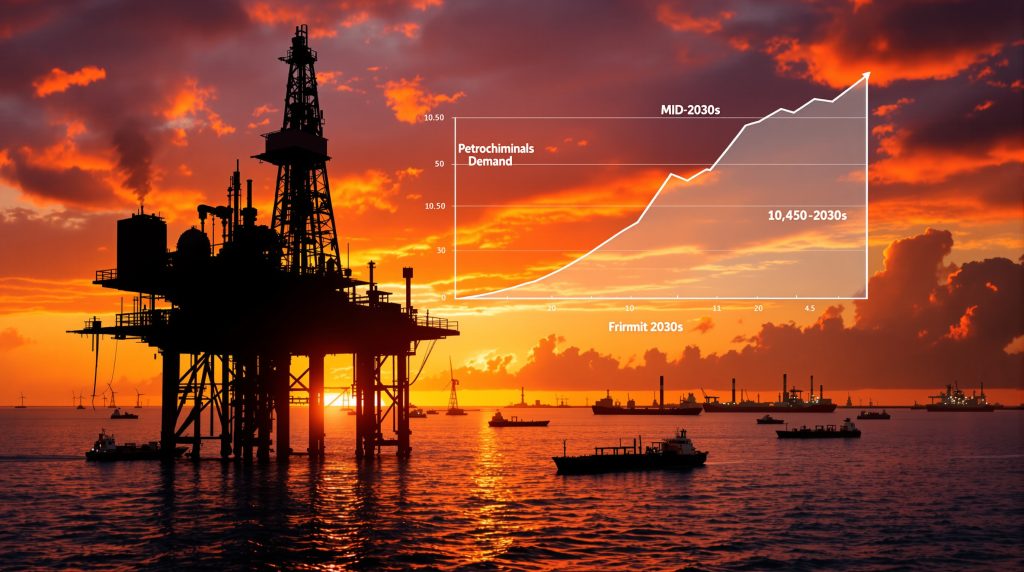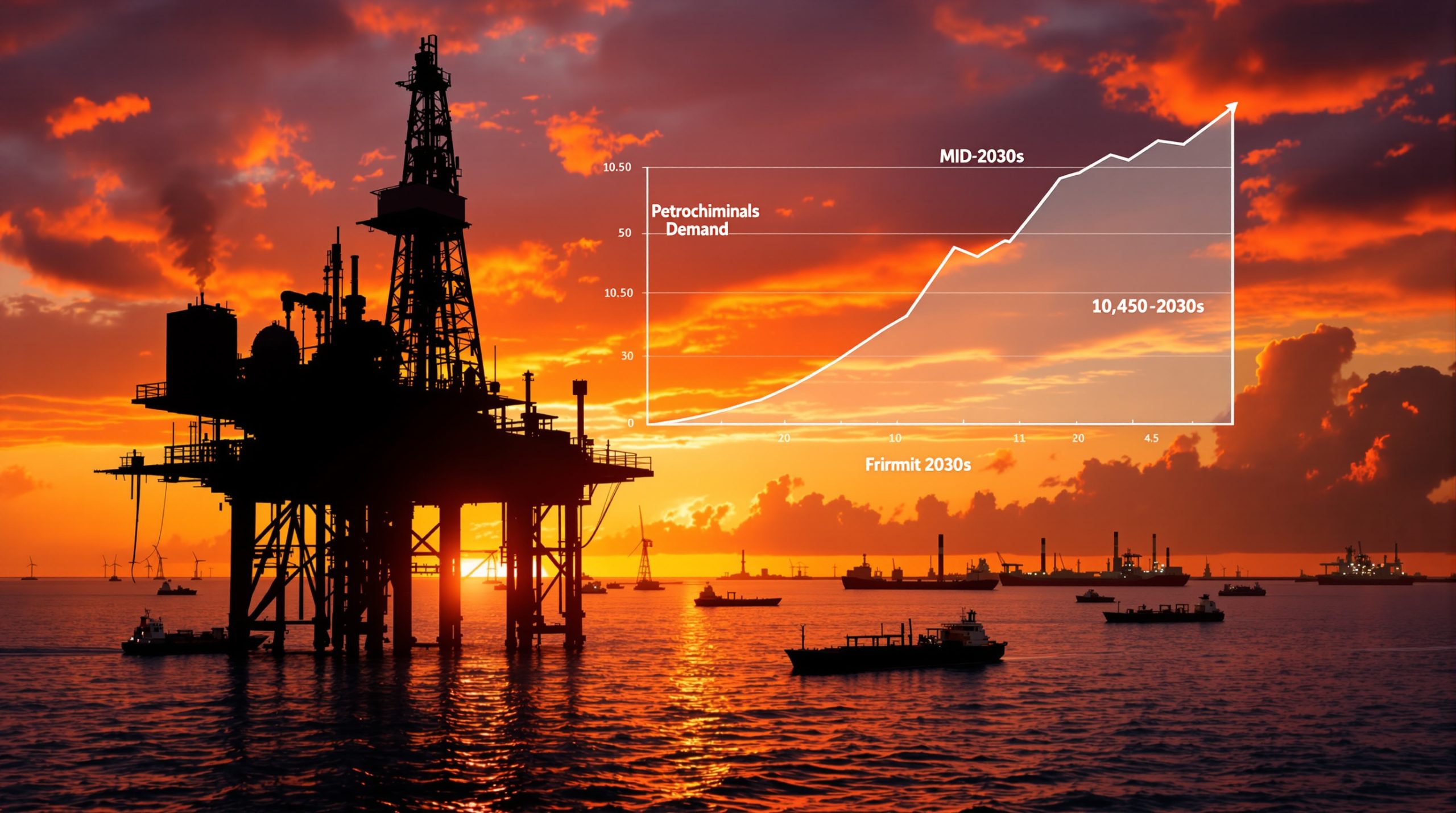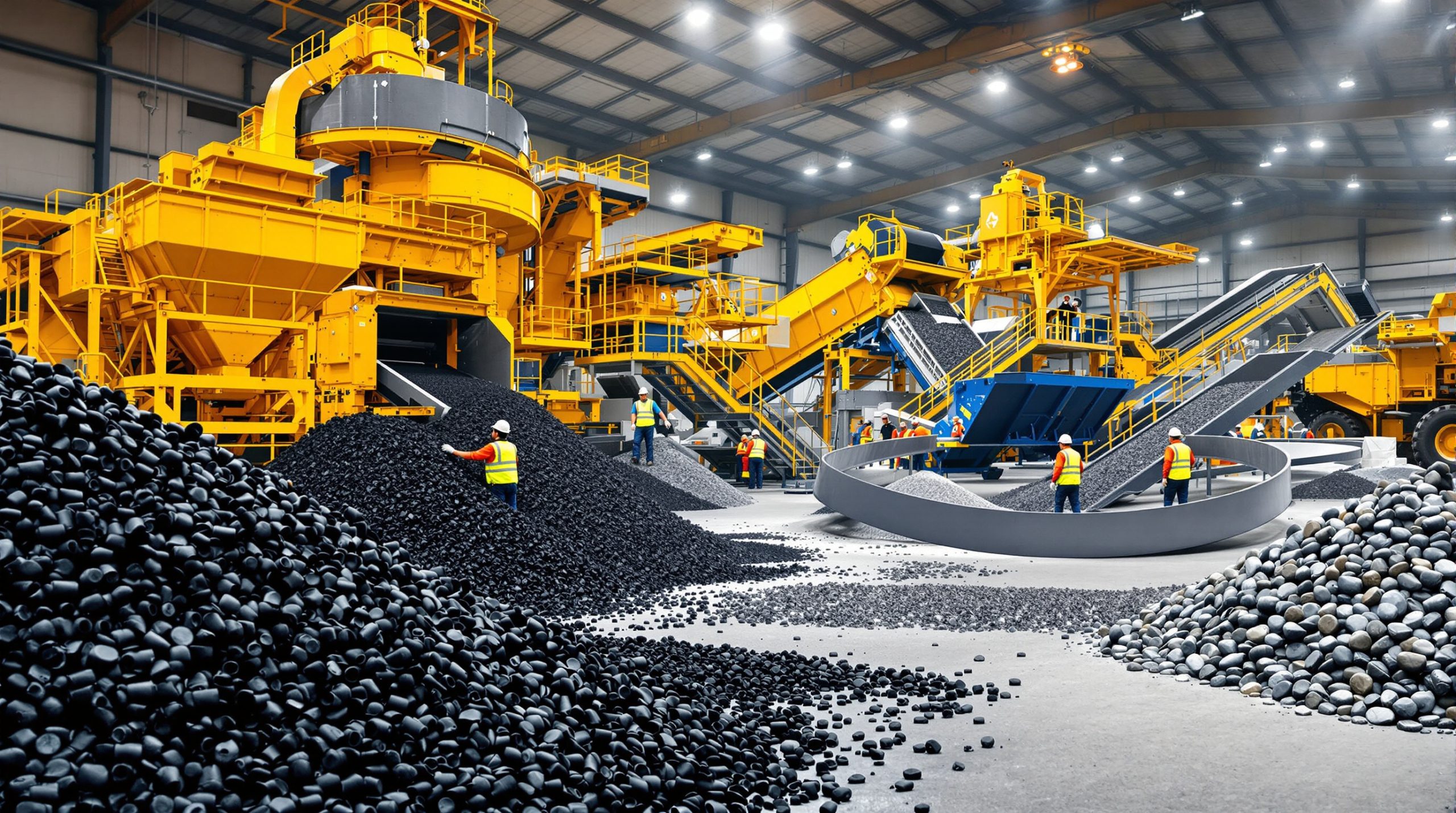How BP's Oil Demand Outlook Has Changed
BP has significantly revised its global oil demand forecast, now predicting continued growth until the mid-2030s rather than peaking before 2030. This represents a major shift in the energy giant's outlook and contradicts earlier predictions from both BP and other forecasters like the International Energy Agency (IEA). The revised timeline suggests a more gradual energy transition and security than previously anticipated.
Key Timeline Revisions
- Previous forecast: Peak oil demand before 2030
- Current forecast: Peak oil demand in mid-2030s
- Post-peak trajectory: Slow decline rather than rapid drop-off
What Factors Are Driving Extended Oil Demand Growth?
Slowing Energy Efficiency Improvements
Energy efficiency gains have been decelerating over the past five years, a trend that significantly impacts future oil demand projections. Unless this slowdown reverses, BP estimates:
- Annual efficiency improvement rate of approximately 2%
- This lower rate could add approximately 6 million barrels per day of additional oil demand over the next decade
- Technological limits may make reversing this slowdown challenging
Emerging Markets Continue Driving Consumption
While China's oil demand growth is moderating after years of dominating global growth patterns, other regions are stepping up:
- India is emerging as a major demand center
- Other Asian economies collectively represent significant growth potential
- Economic development and rising living standards in these regions support continued oil consumption
Petrochemical Sector Offsetting Transport Declines
The petrochemical industry has become increasingly important in sustaining oil demand:
| Petrochemical Oil Demand Growth | Volume (Million bpd) |
|---|---|
| 2000 | 8 |
| 2023 | 14+ |
| Share of overall demand growth | 25% |
This sector's growth helps counterbalance declining demand from transportation as electric vehicles gain market share. Furthermore, recent developments in battery recycling breakthrough technologies may impact how quickly the automotive sector transitions away from fossil fuels.
What Are BP's Scenario Projections Through 2050?
BP analyzes two distinct scenarios in its Energy Outlook report, showing dramatically different trajectories for global oil price rally outlook:
"Current Trajectory" Scenario
This scenario reflects existing policies and trends without significant additional climate action:
- Oil demand peaks around 2035
- Plateaus until approximately 2050 in most regions
- Visible decline only in China and developed economies
- Overall demand reduction of 15% from 2023 levels by 2050
- Projected 2050 demand: Approximately 85 million barrels daily
"Below 2°C" Scenario
This more aggressive decarbonization scenario aligns with Paris Agreement goals:
- More rapid decline after peaking in mid-2030s
- Much steeper reduction in global consumption
- Overall demand reduction of 70% from 2023 levels by 2050
- Projected 2050 demand: Less than 35 million barrels daily
How Will Transportation Transform Oil Markets?
Electric Vehicle Adoption Projections
BP forecasts dramatic growth in electric vehicle adoption under both scenarios:
| Scenario | EVs in 2023 | EVs in 2035 | EVs in 2050 |
|---|---|---|---|
| Current Trajectory | 40 million | 480 million | 1.4 billion |
| Below 2°C | 40 million | 560 million | 2.1 billion |
For context, the global vehicle fleet currently stands at approximately 1.5 billion vehicles, highlighting the scale of transformation projected.
Aviation Demand Remains Resilient
Unlike ground transportation, aviation demand is expected to continue supporting oil consumption:
- Expanding global economic activity increases air travel demand
- Rising living standards in developing economies boost passenger numbers
- Alternative aviation fuels face significant scaling challenges through 2035
Industrial Demand Projected to Decline
Industrial applications of crude oil are expected to decrease through 2050, driven by:
- Electrification of industrial processes
- Efficiency improvements in manufacturing
- Policy measures targeting industrial emissions
What Regional Variations Does BP Forecast?
BP's outlook identifies significant regional differences in oil demand trajectories:
Developed Economies
- Earlier peak demand (already occurring in some markets)
- Steeper decline rates after peaking
- Faster EV adoption and efficiency improvements
China
- Demand growth already slowing significantly
- Expected to peak earlier than global average
- Aggressive electrification policies accelerating transition
India and Emerging Asia
- Continuing demand growth through most of the forecast period
- Later peaking than developed markets
- Driving global demand growth in the 2030s
What Are the Implications for Oil Industry Investment?
The revised forecast has significant implications for investment decisions:
- Longer runway for conventional oil production investments
- Need for continued upstream development to offset natural field declines
- More gradual transition timeline for major producers
- Potential for sustained profitability in traditional oil businesses through the 2030s
Balancing Act for Energy Companies
Energy majors like BP face complex strategic choices:
- Maintaining oil production capacity while demand remains strong
- Gradually increasing investments in low-carbon alternatives
- Managing shareholder expectations during extended transition
- Preparing for eventual demand decline in the 2040s
The current OPEC oil market outlook also plays a crucial role in how these companies position themselves for the coming decades.
How Reliable Are These Forecasts?
BP acknowledges significant uncertainty in its projections, noting that the likelihood that either of its two scenarios will materialize exactly as described is negligible.
Several factors could accelerate or delay the peak:
- Policy changes (carbon pricing, ICE vehicle bans)
- Technology breakthroughs in alternatives
- Economic growth patterns
- Consumer preference shifts
- Geopolitical developments affecting oil price trade impacts
FAQ: BP's Oil Demand Forecast
When does BP expect global oil demand to peak?
BP now forecasts global oil demand will continue growing until the mid-2030s before beginning a gradual decline. This represents a significant revision from previous forecasts that suggested a peak before 2030.
What is causing BP to push back its peak oil demand forecast?
Several factors have led to this revision, including slower-than-expected energy efficiency improvements, continued strong demand from emerging economies, and robust growth in petrochemical applications for oil that offset declines in transportation.
How does BP's forecast compare to other industry projections?
BP's revised forecast now diverges from some other forecasters like the IEA, which has maintained earlier peak predictions. However, it aligns more closely with projections from some other major oil producers who have consistently forecast longer demand growth periods.
What sectors will drive oil demand growth through the 2030s?
Petrochemicals and aviation are expected to be the primary growth drivers, while passenger vehicle demand gradually declines as electric vehicles gain market share. Industrial applications show mixed trends depending on the region.
How might climate policies affect these projections?
More aggressive climate policies could accelerate the demand peak and steepen the subsequent decline, as illustrated in BP's "Below 2°C" scenario where demand falls 70% by 2050 compared to just 15% in the "Current Trajectory" scenario.
Further Exploration
Readers interested in learning more about global energy forecasts can also explore related educational content from BP's Energy Outlook, which provides detailed analysis of various energy transition scenarios and their implications for oil markets.
Looking to Capitalise on Future Mineral Discoveries?
Discover why significant mineral findings can generate exceptional returns by exploring Discovery Alert's dedicated discoveries page, where their proprietary Discovery IQ model provides real-time alerts on ASX mineral discoveries, giving subscribers a crucial market advantage before wider recognition occurs.




